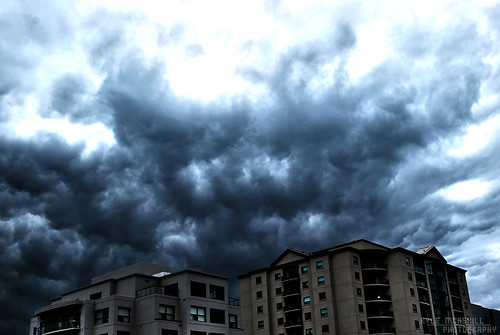I have a photo of a parking lot in overcast, rainy conditions. I personally consider my subject or theme to be the state of the weather and the condition of the quality of the humid air. A friend observed that he thought it was not a good photo because of the cars. I let him know that I did not consider them to be the subject of the photo.
Aren't there some good examples of principals in the photo whom are not the subject? I would think there would be one or a few that have people, but they don't always need to be the subject. Or do they?
Per request, here is the photo in question:
EDIT: in response to many of you here, I do agree that the cars have the sharpest focus. I like to think of them almost as a horizon. My eyes are drawn there, but I then allow my eyes to dull a little to see the difference of what's above and what's below. In this regard, wouldn't the cars be effective as the point of focus?
EDIT: same parking lot, days later, different sky
I have to disagree with the consensus here. Please see the two photos below. Given the advice of many here, it seems the goal of a good photo would be to remove the distractions.
The above photo is the original; below is the crop, less the buildings, cars, and walkway. I would argue, however, that each of them frames the sky, and each shows the effect of the surrounding light. Particularly the walkway immediately in the forefront to the observer. The light is bright here, unusually so for the weather that's closing in.
I still contend that the original image above works as a composite condition of the day, and cropping it in any way will detract from the effect (well, mayyybe I would remove the handicap sign - but I like a little natural framing).
Is there anyone out there that agrees with me? Doesn't anyone think either of these original captures hold merit in expressing the theme of the climate, rather than seemingly presenting subjects that are really irrelevant?






